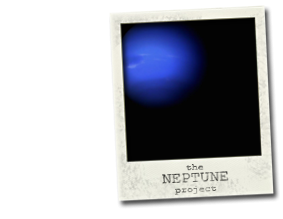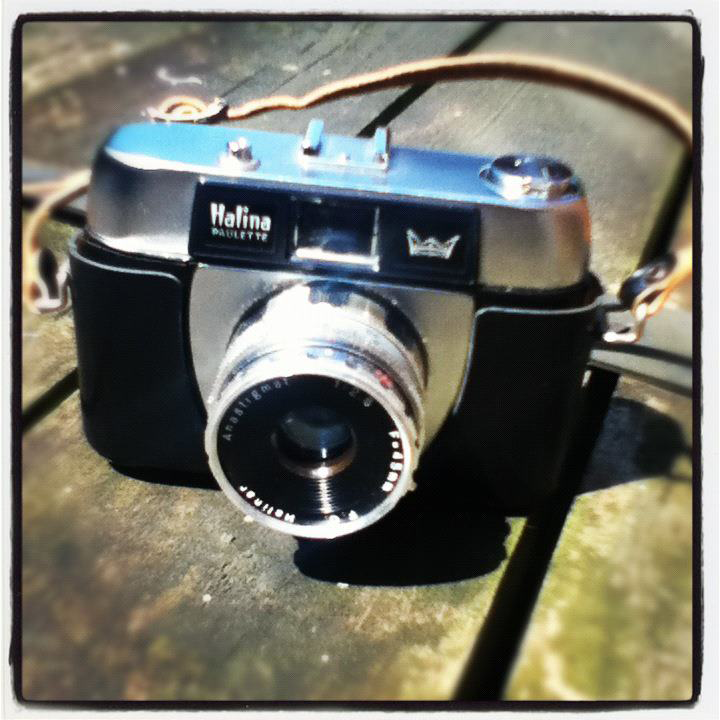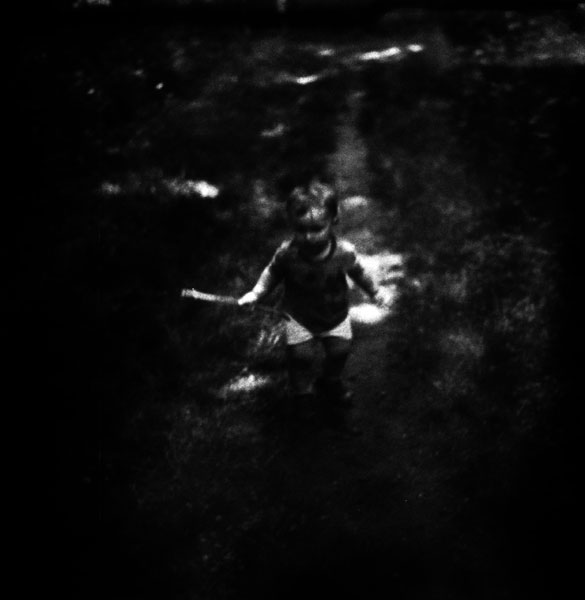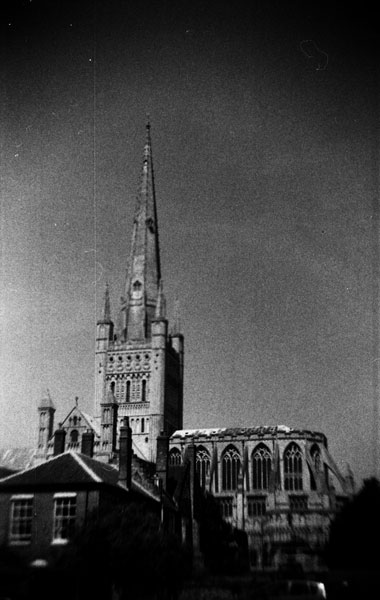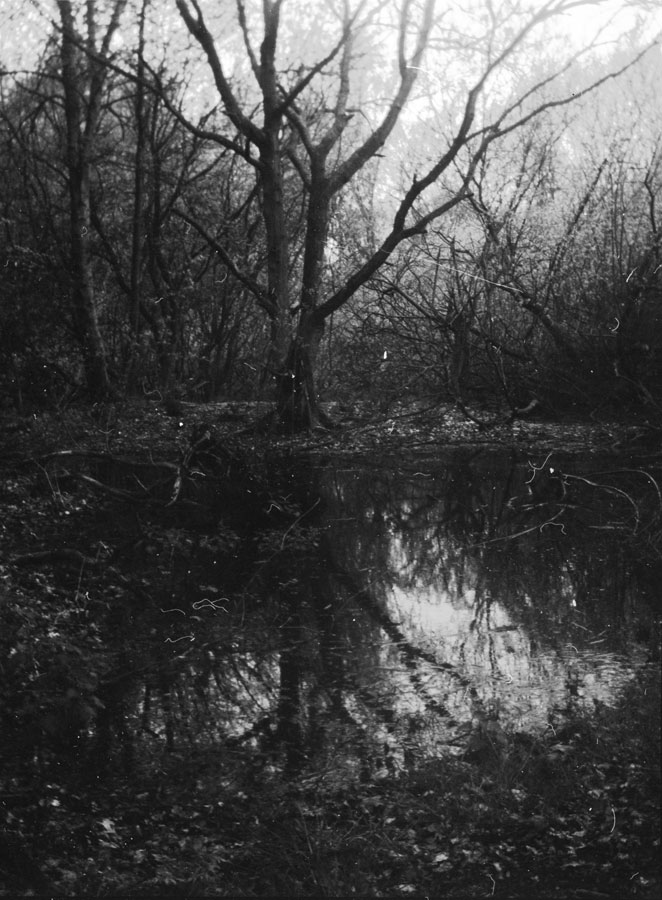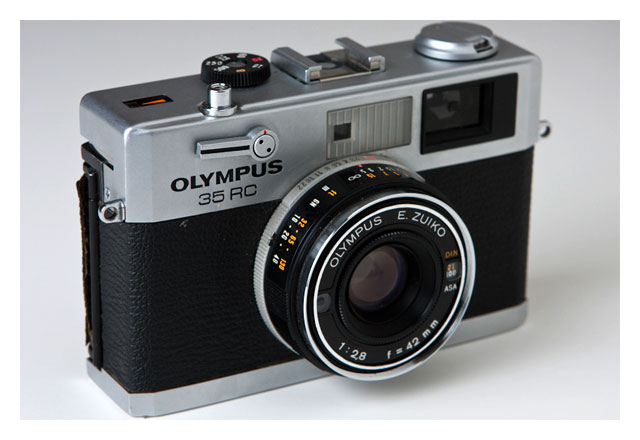The Halina Paulette
Camerapedia says of this camera:
“The Halina Paulette was a 35mm viewfinder camera made in Hong Kong by Haking. It was introduced in c.1965, with a 45mm/f2.8 lens in a 4-speed (1/30-1/250) + B shutter. “
Yesterday I developed a roll of Kodak TX400, the first I have put through this particular camera. And I developed it with some trepidation.
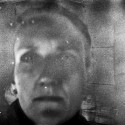 First off, the shutter makes such an unassuming noise, I was convinced it didn’t work. These two shots (which made me laugh out loud when I scanned them) are evidence that I was still looking through the lens to ascertain any aperture movement at all…
First off, the shutter makes such an unassuming noise, I was convinced it didn’t work. These two shots (which made me laugh out loud when I scanned them) are evidence that I was still looking through the lens to ascertain any aperture movement at all… ![]()
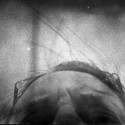 Then there was the problem of the camera-back, which seemed to me to be terribly loose. So I couldn’t be entirely sure the film hadn’t been completely light-flooded. My particular copy (which is rather a beautiful thing, I’m sure you’ll agree) has its own original case. So I decided to leave it in it, cumbersome as that might be, so as to minimise light-leaks. This worked to a degree, but as even these two shots show, it was very limited success, and some shots were too damaged to be viewable.
Then there was the problem of the camera-back, which seemed to me to be terribly loose. So I couldn’t be entirely sure the film hadn’t been completely light-flooded. My particular copy (which is rather a beautiful thing, I’m sure you’ll agree) has its own original case. So I decided to leave it in it, cumbersome as that might be, so as to minimise light-leaks. This worked to a degree, but as even these two shots show, it was very limited success, and some shots were too damaged to be viewable.
However, for me, shots such as this:
Or even this:
 demonstrate its great potential.
demonstrate its great potential.
So here is a gallery of these and the remaining shots, and now I shall be attempting to fix that light-leak, loading her up with another roll of film, and having another go! ![]()
Teddy Dusters, with stick
Voigtländer Brilliant (1938) / Cross-processed Ilford XP2
Fed 4, Jupiter 11, Tokyo Optical
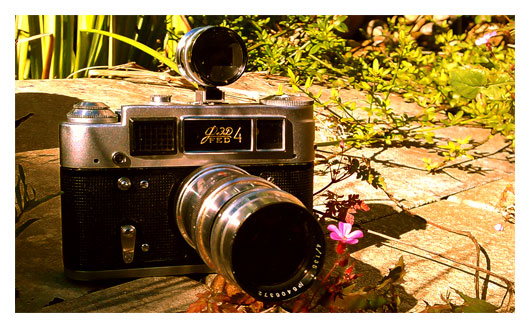 Over the last few days I have finished up film from the Gakkenflex, the Kodak Cresta II and the Voigtlander Brilliant (which had a mishap recently but still seems to be functional). My intention is to sell the Brilliant and put the funds towards a Yashica Mat TLR.
Over the last few days I have finished up film from the Gakkenflex, the Kodak Cresta II and the Voigtlander Brilliant (which had a mishap recently but still seems to be functional). My intention is to sell the Brilliant and put the funds towards a Yashica Mat TLR.
I have a Mamiya EE to test, not a very exciting camera, but you can pick them up for a couple of bucks apiece and, worst case, take them apart for the hardware. It can cost you twice as much to buy a small bag of camera screws on Ebay. And I picked up a Fed 4 body (for 99p) onto which I’ve fitted an old Jupiter 11 lens and a Tokyo Optical viewfinder, it looks kind of amazing (pictured). Soviet era cameras are always gratifying, for the experience as much as the results.
I am also cutting down a roll of Fuji Pro400 to put it into the Duex. It will be so precious to see the result of this sublime art-deco era lens on such a rich, smooth film stock.
Lo-Fi
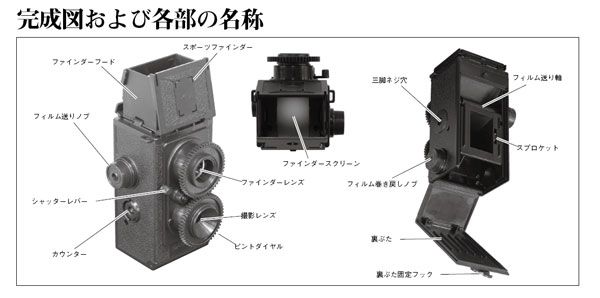 The more cameras I use, the greater my respect for lo-fi photography as a truly viable pursuit. Composition remains true regardless of the lens, and I love the Neptune end of the photographic polarity. That is of course photography’s natural state: chemical uncertainty. The rush to the wrong end of the polarity, toward Virgo and ever greater control, more megapixels, less chromatic aberration, instant verifiable results with the inconveniences cloned out after the fact in Photoshop is getting photography backward.
The more cameras I use, the greater my respect for lo-fi photography as a truly viable pursuit. Composition remains true regardless of the lens, and I love the Neptune end of the photographic polarity. That is of course photography’s natural state: chemical uncertainty. The rush to the wrong end of the polarity, toward Virgo and ever greater control, more megapixels, less chromatic aberration, instant verifiable results with the inconveniences cloned out after the fact in Photoshop is getting photography backward.
Recently I bought a Gakkenflex (pictured) which came originally from Japan. When first made this 35mm ‘Toy-TLR’ retailed for about 6 or 7 dollars, and was made entirely of plastic from a kit in a magazine. There are clones out there which give the same result for not much more. I also bought a Japanese Superheadz Black Devil and I took them both out today along with a 1956 Kodak Cresta II. There is simply no hope of controlling outcomes with any of these cameras, except in the most rudimentary terms. All you have is composition, and an understanding of which light will work, and which won’t.
And that is exactly what makes lo-fi photography so much fun, it has all the magical promise of uncertainty.
Ensign Ful-Vue
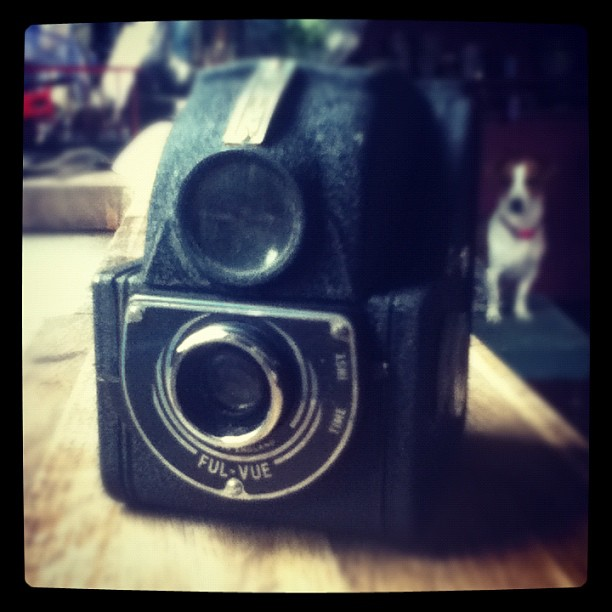 Last week, whilst trawling our local antique (and junk) shops, Jem came across this funky little camera, which he promptly bought for a fiver (“Well… it would have been rude not to!”) and which I promptly fell in love with. My instant love-affair with it meant he gifted it straight to me.
Last week, whilst trawling our local antique (and junk) shops, Jem came across this funky little camera, which he promptly bought for a fiver (“Well… it would have been rude not to!”) and which I promptly fell in love with. My instant love-affair with it meant he gifted it straight to me. ![]()
Yesterday I loaded it up with expired Ilford XP2 film, which is our usual M.O. if we aren’t yet sure if a camera works properly or not, and off we went to try out our very old cameras: Jem was using his Box Brownie for the first time.
This little gem was made between 1946 and 1949. It is a TLR with a beautiful big Brilliant-style reflex viewfinder on the top. It is a unique thing – pretty avant-garde for its time – as it was the first ‘streamlined’ box-style camera of its type. It has a fixed shutter of 1/30th of a second and a fixed aperture of f11. Rather charmingly, if you pull the tiny lens out a little way, you can take close-ups of 3-9 feet, and push it back in for 9 feet or more.
My first hurdle, upon taking it out of my bag for the first shot, was discovering that the mirror has come loose and was rattling around inside the viewfinder compartment. Nothing I can do about that until I’ve finished the roll, so for now I have to give it a gentle shake to reposition it and take my shots *very* carefully…. Of course I can’t be entirely sure it’s back in perfect position either, so there may be some funny angles resulting from this experiment!
I’m halfway through the roll, and hope to have it finished, developed and the results posted up here some time next week.
Repairing the Voigtlander Brilliant
 A while back – maybe last year – I was lucky enough to find a Voigtlander Focusing Brilliant, the best Brilliant (superlatives notwithstanding) that money can buy with a Compur shutter, and a true TLR, unlike the majority of earlier faux-TLR models. The only real problem with it was that the mirror was so badly corroded that it was near impossible to focus.
A while back – maybe last year – I was lucky enough to find a Voigtlander Focusing Brilliant, the best Brilliant (superlatives notwithstanding) that money can buy with a Compur shutter, and a true TLR, unlike the majority of earlier faux-TLR models. The only real problem with it was that the mirror was so badly corroded that it was near impossible to focus.
This camera was manufactured in 1938 and it’s reputed to have a decent lens, so it seemed a real shame to just let it gather dust. I removed the finder (4 small screws inside the hood, 3 of which were rusted through) to reveal the mirror, which as you can see, is fubar.
In picture two you can see an old make-up mirror of Alice’s which was almost the right size, I cleaned it up and measured out the replacement mirror size and cut it to fit.
All said and done it was a very easy operation, the new mirror dropped right into place and now it is quite perfect, as good as new in fact, which isn’t bad for a camera that is about to turn 75!
So that (in the odd spare moment) is what I’ve been doing this week. I have also cleaned up a Kodak Cresta, fixed a light leak on a Voigtlander Bessa and loaded new colour film into a Box Brownie. The light hasn’t been great though this week, and the box Brownies only work well under the best conditions. Other than that I’ve processed film from the Mamiya C330, and also from the Kodak Duex, which looks pretty random on the negs, but we shall see soon enough.
I’m about to process a roll of Neopan 1600 that I shot through a lensbaby, I have no real idea what to expect, but I’ll get some galleries up soon.
William Carrick, Pioneer.
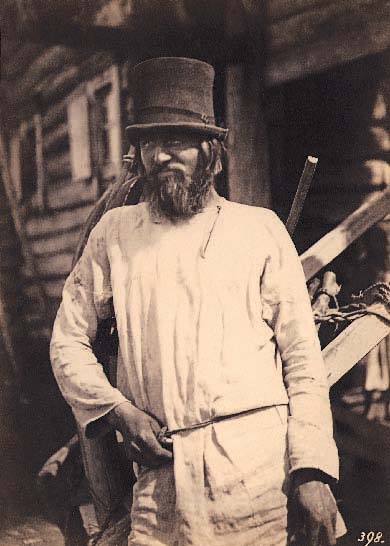 An incredible record of early photography, these images of Russian peasants (“Peasant Characters from Simbirsk Province”) taken somewhere between 1860 and 1870 are an incredible window into the past, and also provide a rare glimpse of the very beginnings of street photography, which found its zenith in the work of the great Henri Cartier-Bresson.
An incredible record of early photography, these images of Russian peasants (“Peasant Characters from Simbirsk Province”) taken somewhere between 1860 and 1870 are an incredible window into the past, and also provide a rare glimpse of the very beginnings of street photography, which found its zenith in the work of the great Henri Cartier-Bresson.
They were taken by Edinburgh born photographer William Carrick in central Russia and he would have used a very early form of plate camera, since portable cameras of any kind hadn’t even been conceived of at this time.
You can see a further 20 photographs from the William Carrick collection over here.
Also check out this awesome picture of William Carrick at his St Petersburg studio here.
Leica Madness
Yesterday I bought a new camera. It’s an Olympus 35 RC, a classic rangefinder made in 1970 and it cost me an incredible £36.75 on Ebay. I have been looking to buy an Olympus rangefinder ever since my 35 SP had to go back because its rangefinder was iffy (a fairly critical flaw in a rangefinder camera, since it is impossible to focus accurately). Rangefinder cameras are (for me at least) the perfect exposition of camera technology for a whole host of reasons, and the Olympus 35 RC is the perfect exposition of the rangefinder camera in my view. It is incredibly light and compact, you can focus almost instantly, and it takes great pictures. The 42mm Zuiko lenses on the Olympus rangefinders are a marvel. The SP has a 7 element lens, and the RC only 5 elements, but in a lens which is only 42mm across, it delivers amazing sharpness. The reason that elements matter in a lens is because they are required to project the subject uniformly, sharply and without aberration onto the film (or digital sensor). More elements delivers greater clarity and fewer aberrations, but before you even begin to project your image onto the film surface, the lens has to compensate for the design issues of the camera itself. A 42mm lens projects exactly onto 35mm film – since the diagonal measurement of a 35mm negative is 42mm. It is therefore the perfect focal length for a 35mm mechanism and it doesn’t need to distort the projected image at all to make it ‘fit’ the film. This means that all 5 elements are dedicated simply to providing clarity and sharpness. This is why 42mm rangefinders deliver such good quality images. The same principle plays out in medium format mechanics too, since most quality 120 rollfilm cameras ship with 80mm lens, as this is the diagonal measurement of medium format film.
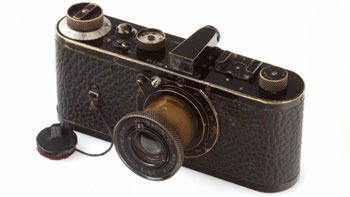 The first rangefinder ever made for production was the Leica 0. It was a prototype made in 1923 by Oskar Barnack and he used a Leitz Summar lens to fit on his prototype body. The reason he used a 50mm lens, rather than a natural fit 42mm lens, was because the company weren’t prepared to manufacture a new lens for an experimental camera design. It is for this reason, and this reason alone that rangefinder cameras have traditionally shipped with a 50mm lens, because the first Leica prototype had a 50mm lens, so all subsequent rangefinders, which were for the first few decades simply Leica copies, had 50mm lenses. From day one therefore the 5 element Zeiss lenses had to account for the 8mm of distortion, which is no big deal because the Zeiss lenses were of sufficiently high quality to cope, but a 42mm lens could have been even smaller and sharper because it would not have needed to compensate for the film back.
The first rangefinder ever made for production was the Leica 0. It was a prototype made in 1923 by Oskar Barnack and he used a Leitz Summar lens to fit on his prototype body. The reason he used a 50mm lens, rather than a natural fit 42mm lens, was because the company weren’t prepared to manufacture a new lens for an experimental camera design. It is for this reason, and this reason alone that rangefinder cameras have traditionally shipped with a 50mm lens, because the first Leica prototype had a 50mm lens, so all subsequent rangefinders, which were for the first few decades simply Leica copies, had 50mm lenses. From day one therefore the 5 element Zeiss lenses had to account for the 8mm of distortion, which is no big deal because the Zeiss lenses were of sufficiently high quality to cope, but a 42mm lens could have been even smaller and sharper because it would not have needed to compensate for the film back.
Nowadays, with your big DSLR cameras, the only way to compensate for the irregular distancing between the focal plane of your camera and the digital sensor (with a big mirror in between) is to have big lenses. This is the only reason that cameras and lenses have become so big. To deliver the equivalent quality of a 42mm rangefinder lens, a DSLR lens needs to be at least 4 or 5 times the size and weight.
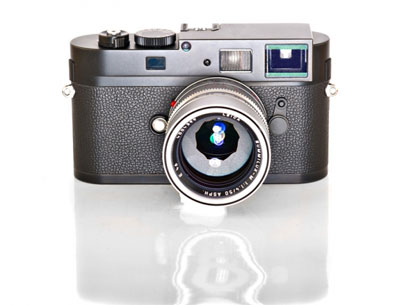 The Leica 0 is a rare camera and only 12 are known to exist. One sold a couple of days back for a staggering $2.8 million in Vienna. Leica cameras have a powerful brand and identity, which is why they cost so much money and they have done a miracle marketing job to be able to charge the prices they do for digital equipment. Even so, the rangefinder philosophy holds to this day. By taking the mirror out of the SLR and fitting a rangefinder instead, the lens can really deliver. A few days back Leica announced the release of a new black and white only digital rangefinder, the Leica Monochrom, and even if it is a Leica, even if it has a truly incredible lens, and even if it is a beautifully engineered rangefinder, it still should not cost $8000, that is £6225.
The Leica 0 is a rare camera and only 12 are known to exist. One sold a couple of days back for a staggering $2.8 million in Vienna. Leica cameras have a powerful brand and identity, which is why they cost so much money and they have done a miracle marketing job to be able to charge the prices they do for digital equipment. Even so, the rangefinder philosophy holds to this day. By taking the mirror out of the SLR and fitting a rangefinder instead, the lens can really deliver. A few days back Leica announced the release of a new black and white only digital rangefinder, the Leica Monochrom, and even if it is a Leica, even if it has a truly incredible lens, and even if it is a beautifully engineered rangefinder, it still should not cost $8000, that is £6225.
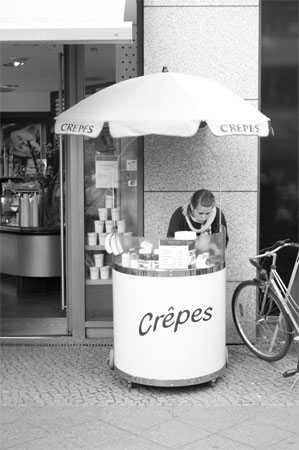 If you translate that into film costs, and home processing, and spend your money on an Olympus 35RC, then I estimate that it will keep you in photographs for about 50 years. But of course, it’s not about cost, it’s about results, right? Here then (left) is an image taken with the new Leica.
If you translate that into film costs, and home processing, and spend your money on an Olympus 35RC, then I estimate that it will keep you in photographs for about 50 years. But of course, it’s not about cost, it’s about results, right? Here then (left) is an image taken with the new Leica.
I am not going to get into digital bashing here, I firmly espouse the view that digital and film photography are not the same thing at all, and should not be compared, but it does seem to me that if I’d taken this picture with my phone camera, I wouldn’t be especially surprised, or even all that impressed.
It’s okay.
I think though that when you take chemicals out of the photography equation, then you are always going to get this predictable type of result. A digital photograph always looks like a digital photograph, whether your camera cost thirty-six or six thousand pounds.
That doesn’t mean that you can’t still take great photos, because the rules of composition will always find a synergy with unusual or arresting subject matter and create a great image, but somehow Leica has found a means to hypnotise people into forgetting this crucial fact. Which doesn’t mean that if I had money to burn I wouldn’t buy a 1955 M3 at the drop of a hat, but compared to the new Leica digitals, even that seems like a giveaway at somewhere around 700 quid.
